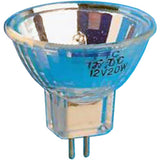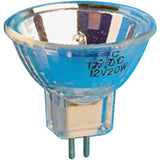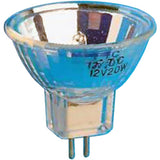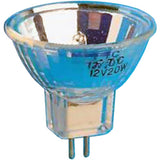Is Notching Blowing Out Your Bulbs Early?
Posted by Nick on for ProLampSales

"I just replaced that bulb. It's already burnt out? The previous one lasted two years!" Yes, we've all had that feeling, as a light bulb we screwed into a socket a few months ago unexpectedly burns out.
The usual response is a little annoyance, paranoia about the fixture or electrical wiring, and resignation to putting in a new bulb. If it's used in a special application like for a car or indicator light, this might involve a lot of work or a call to an expert who can fix it.
Why do light bulbs burn out, sometimes much faster than expected? After all, at a rated life of 2,000 hours, a bulb that's on for 3 hours a day should last 667 days -- nearly 2 years.
Where Rated Life Comes From
Manufacturers obtain rated life data on bulbs by testing lamps in strictly controlled environments. The average household bulb is 60 Hertz alternating current and uses 120 volts. In conditions where the bulb is kept still (no shocks or vibration), lamps should reach their rated lifetimes or close to it.
How Do Light Bulbs Typically Fail?
Tungsten Filament Evaporation - Rated Life Achieved
The main failure mechanism for the majority of common household incandescent and halogen lamps that reach their rated lives is tungsten filament evaporation. If this process plays out as expected, the bulb should last as long as it is rated.
Filament evaporation happens as a result of the high temperature incandescent and halogen bulbs operate at. Furthermore, the filament does not evaporate uniformly, and some parts of the filament will evaporate faster and become thinner than the rest of the lamp. As this progresses, the thinner parts of the filament will either break or melt, resulting in lamp failure.
Filament Notching - Premature Burnout
A newer type of failure mechanism that has been identified is filament notching. GE Lighting describes this process as "the appearance of step-like or sawtooth irregularities, appearing on all or part of the tungsten filament surface, after some burning." This process can drastically shorten the life of the bulb, reducing it to one-half or fewer of its rated hours.
Notching results in a filament that is thinner in places than designed, with some notching even cutting through the entire diameter of the filament. Once this starts to happen, you can throw out your rated hours, as the bulb is likely to fail long before the tungsten evaporation process would have ended its life.
What Causes Notching?
According to GE, there are at least three causes of notching in lamps.
- If a bulb is run at lower temperatures than will allow for significant tungsten evaporation, notching may result. Excessive or continuous dimming of incandescent and halogen fixtures will cause the filament to operate at lower temperatures.
- Low amperage lamps that have very small filament wire sizes are also more susceptible to notching. GE points to lamps with filaments that are less than 0.001" in diameter.
- Increased use of DC voltage
Which Lamps are Most Prone to Notching?
Subminiature bulbs with a T2 lamp shape have been identified as the most susceptible to premature failure due to notching. This is due to the small size of the bulbs and the extremely thin filaments.
Can Notching Be Predicted or Prevented?
Unfortunately, the answer is no. Notching is difficult to predict on a bulb-to-bulb basis, and the tiny filament size makes identifying the process as it happens an exercise in futility.
The best way to prevent a disaster due to premature lamp failure is to keep spare lamps on hand, especially for tiny bulbs used in specialty lighting applications.
Featured image © Andreas. / Flickr Commercial License
Featured Products (View All)
- 0 Comments
- Posted in Halogen, Incandescent
0 Comments




